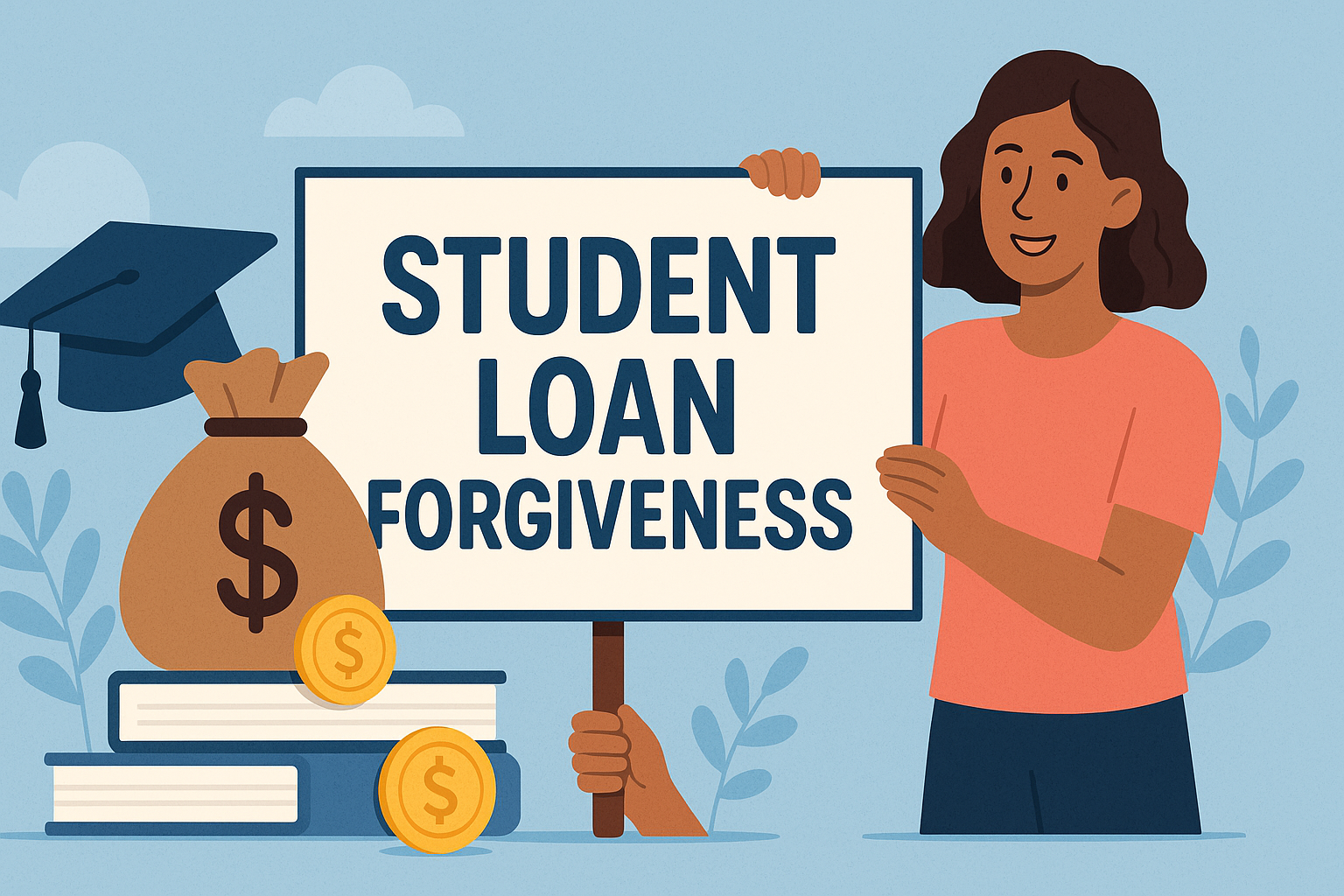Many Borrowers Qualify for Forgiveness Without Knowing It
Student Loan Forgiveness It’s estimated that roughly 50% of student loan borrowers qualify for some type of student loan forgiveness program. While most borrowers don’t know this, the secret to qualifying for loan forgiveness is simple. Just sign up for a qualifying student loan repayment plan. And your loan will be forgiven at the end of the plan. Your income might even be low enough to qualify for zero or minimal repayment. At which your loan will be forgiven at the end. You can sign up for these programs for free at studentloans.gov or hire a company to do it for you. And whether you do it yourself, or hire someone to help, here are the student loan repayment plans that qualify for student loan forgiveness.

Income-Based Repayment Plan (IBR)
The IBR plan is simple. If you have loans from before July 1, 2014, your payment will not be higher than 15% of your discretionary income. You will make payments for 25 years and at that point, your loans will be Student Loan Forgiveness. For borrowers with loans after July 1, 2014, your loan will not exceed 10% of your discretionary income. And the loan will be forgiven after just 20 years. Discretionary income is determined by a formula based on your family size and taxable income. Studentloans.gov has a great calculator that can help determine your amount. With IBR, your loan repayment will never exceed the payment of the 10 year standard repayment plan. And your loan will be forgiven at the end of the term.
Pay As You Earn Repayment Plan (PAYE)
The pay as you earn repayment plan, PAYE, is very similar to the IBR plan. With PAYE, you will not pay more than 10% of your discretionary income. And your loan will also be Student Loan Forgiveness after 20 years. The key difference is that only certain loans going back to 2007 qualify for this plan. With PAYE, your loan repayment will never exceed the payment of the 10 year standard repayment plan. And your loan will also be forgiven at the end of the term.

Pay As You Earn Repayment Plan (PAYE)
The pay as you earn repayment plan, PAYE, is very similar to the IBR plan. With PAYE, you will not pay more than 10% of your discretionary income. And your loan will also be Student Loan Forgiveness after 20 years. The key difference is that only certain loans going back to 2007 qualify for this plan. With PAYE, your loan repayment will never exceed the payment of the 10 year standard repayment plan. And your loan will also be forgiven at the end of the term.
Income Contingent Repayment Plan (ICR)
The income contingent repayment plan, ICR, is a little different than IBR or PAYE. There are no initial income requirements for ICR, and any eligible buyer may make payments under this plan. Under this plan your payments will be the lesser of the following. 20% of your discretionary income. What you would pay on a repayment plan with a fixed payment over the course of 12 years, adjusted according to your income. With the ICR plan, your loans will be forgiven at the end of 25 years. Student Loan Forgiveness With ICR, your payment might be higher than the standard 10 year repayment plan, since you have to submit your income every year, if your income rises high enough, your payment will adjust accordingly.
Public Service Loan Forgiveness (PSLF)
This isn’t a secret. The PSLF program will forgive any loan balance after you’ve made 120 qualifying monthly payments and work for a qualifying employer. Non profits, public education, and public health occupations, among others qualify under this plan. If you are smart, you’ll combine IBR or PAYE with PSLF to get the maximum benefit. You can enroll in our 15 minute program to show you how to apply for the PSLF program at TheCollegeInvestor.com. Remember, while these secret student loan forgiveness options could be helpful to some borrowers, for others they may result in tax consequences. Under current IRS rules, the forgiven amount of the student loan is added to the borrowers taxable income for the year. For example, if you have $50,000 worth of forgiven loans and made $35,000 working, your total income for the year would now be $85,000. The result, a higher tax bill.
Private Student Loans Do Not Qualify
If you have private student loans, unfortunately, you won’t qualify for any type of forgiveness program, even secret ones. If you’re struggling with your private Student Loan Forgiveness, consider refinancing them to take advantage of a lower interest rate or payment structure. We recommend services like Credible, which allows you to see what you qualify for, in less than two minutes. And compares student loans at dozens of lenders. As a bonus, CollegeInvestor readers will get a $200 credit when they refinance with Credible.
Final Thoughts on Finding the Right Forgiveness Program
Finding a qualifying Student Loan Forgiveness plan can be confusing. Remember, you can always sign up for free at studentloans.gov. But if you want to pay for a reputable company, I highly recommend Ameritech Financial. They can find the right program for you. And potentially restructure your loans so that you can qualify for programs you would not otherwise qualify for. They are licensed and bonded in most states, and can answer your questions 24 hours a day. Want to learn more?

2 thoughts on “Secret Ways To Get Student Loan Forgiveness”